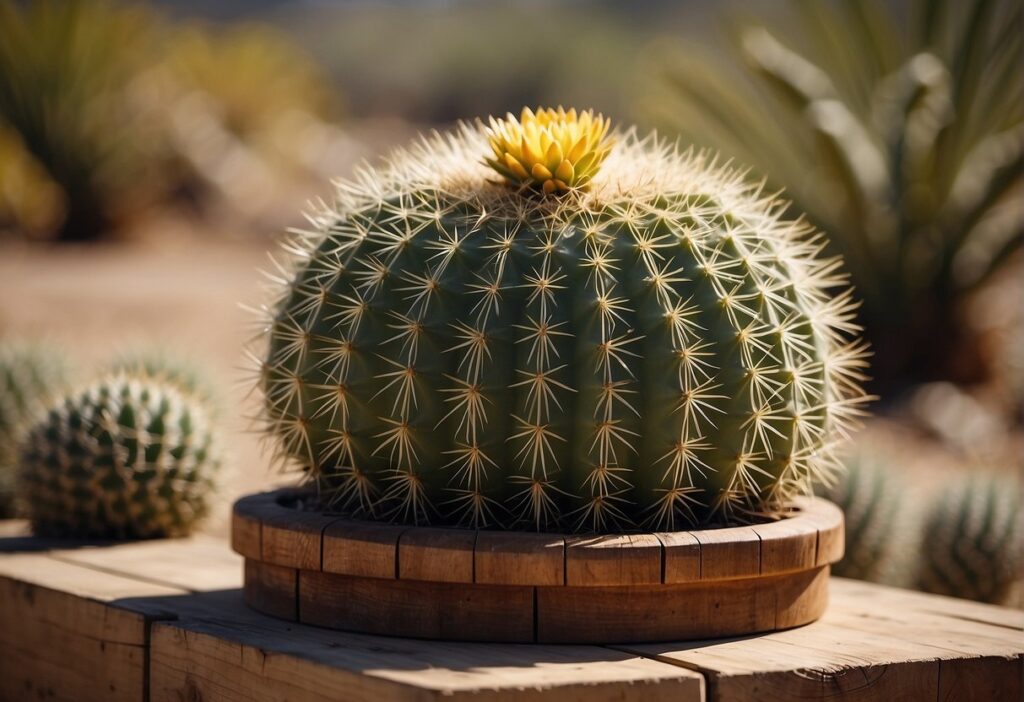Introduction
Cacti are beautiful, low-maintenance plants that can thrive in various environments, making them ideal for beginner and seasoned gardeners alike. However, while they are known for their resilience, they still need specific care to thrive. This guide will walk you through the key aspects of cactus care, helping you provide the ideal conditions for your new cactus to grow and flourish.
- Choosing the Right Pot and Soil
- Pot Size and Material: Start by selecting a pot slightly larger than the cactus itself. Pots made from materials like clay or terracotta are ideal because they allow better drainage, helping prevent root rot.
- Soil Requirements: Cacti require well-draining soil to thrive. Purchase a cactus-specific potting mix or create your own by combining regular potting soil with sand, pumice, or perlite. This mix allows the roots to breathe and prevents excess moisture.
- Placing Your Cactus in the Right Location
- Light Needs: Most cacti are native to sunny, desert environments, so they generally need a lot of light. Place your cactus near a south or west-facing window to give it ample sunlight. Indoor cacti usually do well with 4-6 hours of direct sunlight daily.
- Gradual Sun Exposure: If your cactus was previously in low light or indirect light, introduce it to direct sunlight gradually to prevent sunburn. Start with a few hours of morning light before transitioning to full sun.
- Understanding Watering Needs
- Watering Frequency: Cacti have low water requirements. In general, water only when the soil is completely dry. During warmer months, this might mean watering once every two weeks, and even less during winter.
- The Soak and Dry Method: A reliable way to water your buy peyote online is to thoroughly soak the soil and then let it dry out completely. This mimics the natural rainfall patterns in deserts and ensures that the cactus roots receive enough moisture without being overwatered.
- Avoiding Overwatering: Overwatering is the most common mistake in cactus care. Signs of overwatering include yellowing or mushy stems. If you notice these signs, reduce the watering frequency and make sure the pot drains properly.
- Maintaining the Right Temperature and Humidity
- Temperature Requirements: Cacti are usually resilient to high temperatures but can struggle in temperatures below 50°F (10°C). Keep them in a room that remains warm and dry, particularly during winter.
- Humidity Levels: Cacti thrive in low-humidity environments, similar to their desert habitats. Avoid placing them in overly humid areas, such as bathrooms or kitchens, as this can lead to fungal growth.
- Fertilizing Your Cactus
- Choosing the Right Fertilizer: Use a balanced fertilizer specifically made for cacti and succulents. Cactus fertilizer typically contains lower nitrogen levels, which helps to prevent overly lush growth that may compromise the plant’s structure.
- When and How to Fertilize: Fertilize during the growing season (spring and summer) about once a month. Dilute the fertilizer to half strength, as cacti generally need only minimal feeding.
- Repotting Your Cactus
- When to Repot: Cacti usually need repotting every 2-3 years, depending on their growth. If you notice roots coming out of the drainage holes or the cactus seems too large for its pot, it’s time to repot.
- How to Repot Safely: Use gloves or a thick cloth to protect your hands from the cactus spines. Gently remove the cactus from its pot, loosen the old soil from its roots, and place it into a slightly larger pot with fresh cactus soil.
- Identifying and Managing Common Cactus Problems
- Pests: While cacti are hardy, they can occasionally attract pests like mealybugs, spider mites, or scale insects. Use a mild insecticidal soap or a mixture of water and isopropyl alcohol to gently remove pests from the cactus surface.
- Rot Issues: Root rot occurs when the plant receives too much water or lacks drainage. To prevent this, make sure you’re using the soak-and-dry method and that your pot has adequate drainage. If rot develops, try trimming off the affected area and replanting the healthy parts in dry soil.
- Sunburn and Discoloration: Sunburn, marked by brown patches, can occur if the cactus is suddenly exposed to intense sunlight. Discoloration may also indicate issues with lighting, water, or nutrients. Adjust these factors to maintain the cactus’s vibrant, healthy appearance.
- Seasonal Care and Adjustments
- Spring and Summer: During the growing season, cacti need more water and sunlight. Increase watering slightly and make sure the cactus gets ample light.
- Fall and Winter: Most cacti enter a dormant period during cooler months. Reduce watering to once a month or less, and avoid fertilizing until spring arrives.
- Propagating Your Cactus
- Propagating by Cuttings: One of the simplest ways to propagate cacti is by taking cuttings. Cut a healthy piece from the parent plant, let it dry for a few days to callous, then place it in soil.
- Growing From Seeds: While it’s more time-consuming, growing cacti from seeds is a rewarding process. Plant the seeds in a cactus mix, keep the soil lightly moist, and ensure they have adequate warmth and light.
Conclusion
Caring for a cactus can be a rewarding and relatively simple experience when you understand its needs. By following these steps, you can ensure your cactus thrives and grows beautifully. With just the right amount of light, water, and care, your cactus will reward you with years of growth, adding a unique and striking touch to your home.
